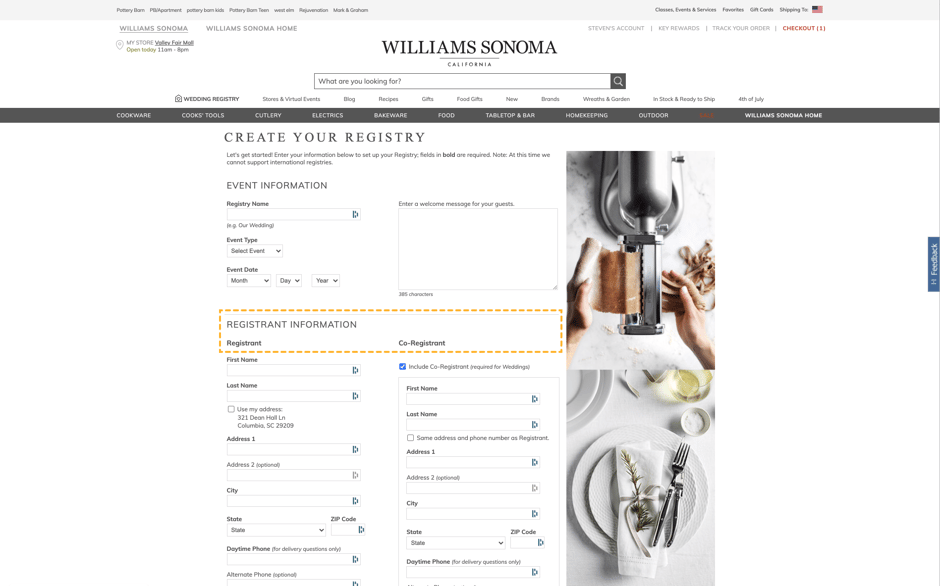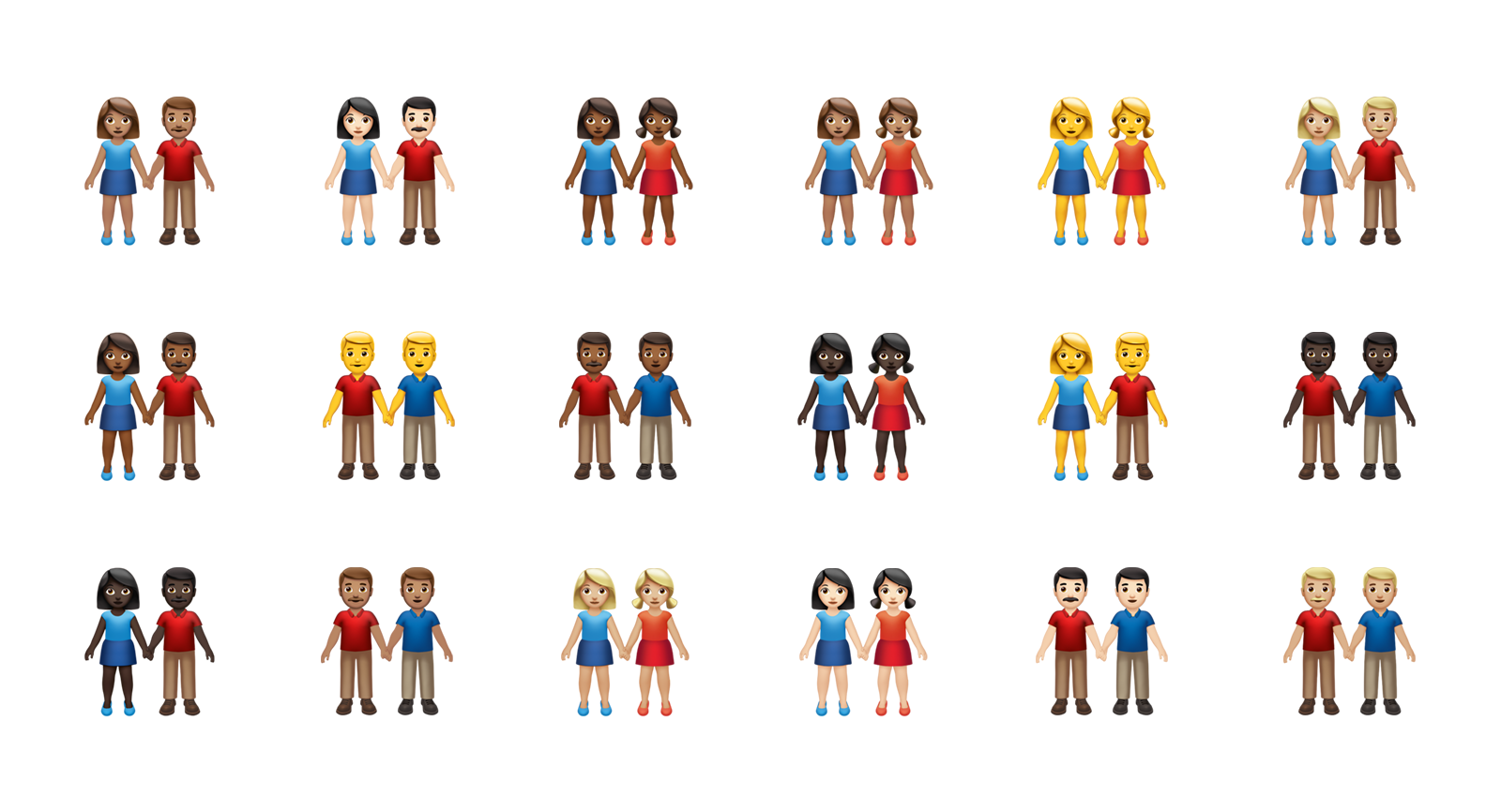What we learned from making wedding registries gay-friendly before same-sex marriage was legal.
In the early 2000s I was a junior Interaction Designer at Digitas, a hot marketing agency, working on the designs for an online wedding registry for Williams-Sonoma. It was pretty heady times for web designers, and they were the most luxe brand I’d worked on.
I remember being nervous as I checked into their HQ by Aquatic Park, because I was going to show them something they hadn’t asked for. I followed my team through their corporate museum displays of brightly colored Le Creuset cast iron cookware and pastel colored chocolate easter eggs, and passed out my printouts of the wireframes for a new registration page.
The wireframes showed the layout of the fields we were going to collect so that soon-to-be newlyweds could set up their gift registries, full of the aforementioned cookware and treats.
I began with a design that showed the historical fields for “Bride” and “Groom”, with the bride being the default.
Then on the following page, I showed the same wireframe, but with “Registrant” and “Co-registrant”. Because you know what? I thought that if and when I got married, I too wanted a registry full of beautiful cookware and treats, but there was not going to be a bride in the picture.
My clients didn’t flinch. They knew exactly what this meant and approved it on the spot.

The Williams-Sonoma gift registry moved from labeling the registrants as “Bride” and “Groom” to “Registrant” and “Co-registrant”.
No big deal, right? But it was and it is still a big deal, because we design best when we are designing for an audience we understand. That’s not to say we can only design for ourselves, or that we can’t ever create good products and experiences for others. But it does mean that we are much more likely to consistently deliver good products and services when we build in a diversity of experiences and perspectives into our design process.
And by extension, inclusive design will draw in new users, and open new markets.
How representation creates change
K.R. Liu, the Head of Brand Accessibility at Google, is a champion for LGBTQ+ rights, and has worn a hearing aid since she was two and a half years old. Her experience helped Google develop their Live Caption product.
This technology automatically generates real-time captions for media with audio. It’s game changing for the 466 million people in the world who are deaf or hard of hearing, but also incredibly valuable for people with the power of hearing. I have used it on a noisy commute and in bed when I just want to keep the volume down.
“Everyone will experience disability at some point in their lifetime; whether temporary or permanent. It’s important to design with and for people with disabilities because everyone will benefit, ” K.R. explains.
And most of us are already familiar with how representation in marketing makes a difference.
Marketing as a barometer of culture can be both a mirror of real life and an aspirational lens through which brands want their customers to see an idealized version of themselves. Often the intent of the marketer is to blur the two.
Sam Haskin, the Inclusive Marketing practice lead at Firewood Marketing, says, "As marketers, the work we do contributes to the projection of culture back on itself. It's really important both for ourselves and for our clients that we see that as a responsibility and do everything we can to make sure that everybody feels included and positively represented in that projection."
Aspiration-oriented marketing has perpetuated some of the worst stereotypes in our culture: think of the unrealistic images of waist size, skin tone, disposable income, smoking etc. All of this makes it very important that marketers respect the responsibility that comes with our access to people's hearts and minds.
When we think about diversity, equity, and inclusion, we often think of who is in the room. But we don’t often think about what DEI means for the workflows. At Ready State, we like to look for better ways to do things, and have been rethinking our design process to make it more inclusive.
In working with C-level executives, we’ve found that they really appreciate it when we can help them break through their own cognitive biases — their entrenched ways of thinking.
“It’s not about designing for someone. It’s about designing with someone.” – K.R. Liu
Jodi Wing, Creative Director at Ready State, says, “It validates our approach to having more designers pitch the work so our clients hear from everyone in the room.”
“It keeps both sides engaged in open dialogue and it encourages people to be comfortable sharing their point of view. Sometimes clients may not understand or like the concept, but are willing to go along with it because others did. Our approach attempts to consider everyone’s varied perspectives.”
We no longer say, “this is the best way forward because I’m the Creative Director,” Jodi says. It’s not just the leader’s voice that matters. Rather, having design leaders that excel at listening to and lifting up their team members.
To quote K.R., “It’s not about designing for someone. It’s about designing with someone.”

